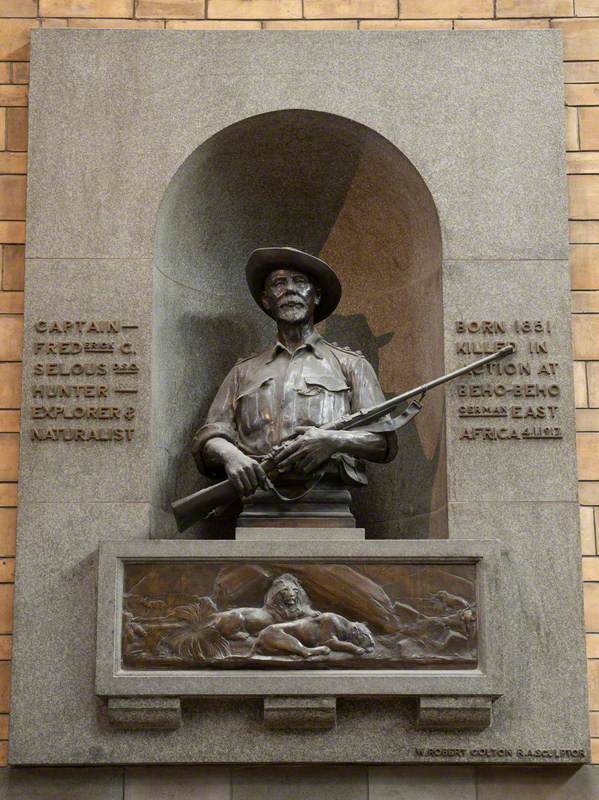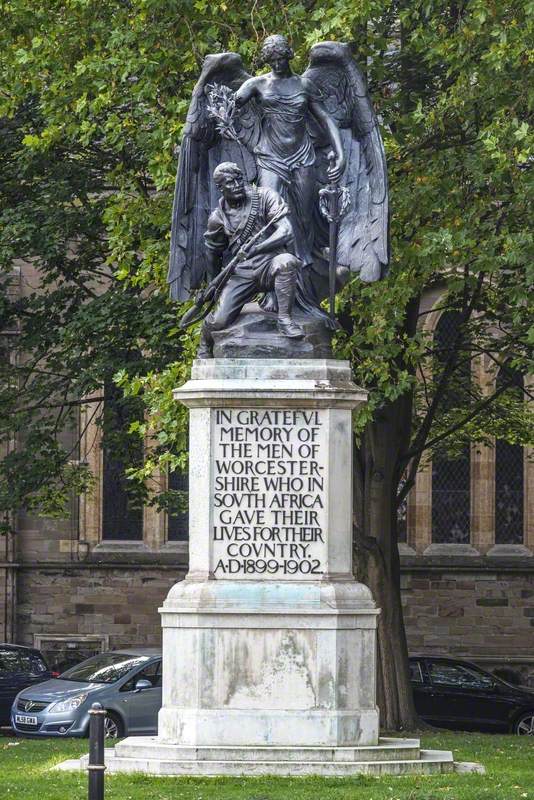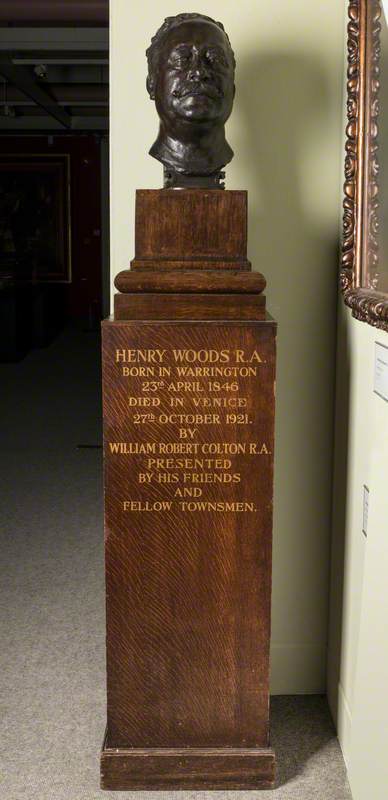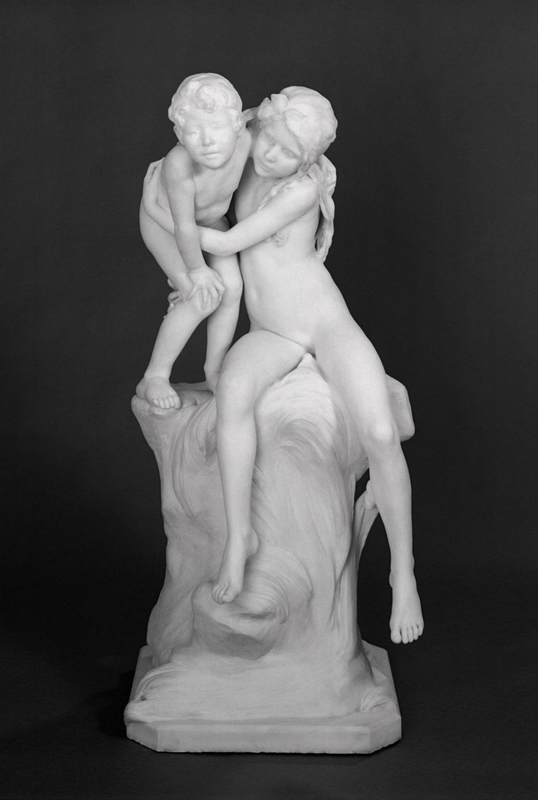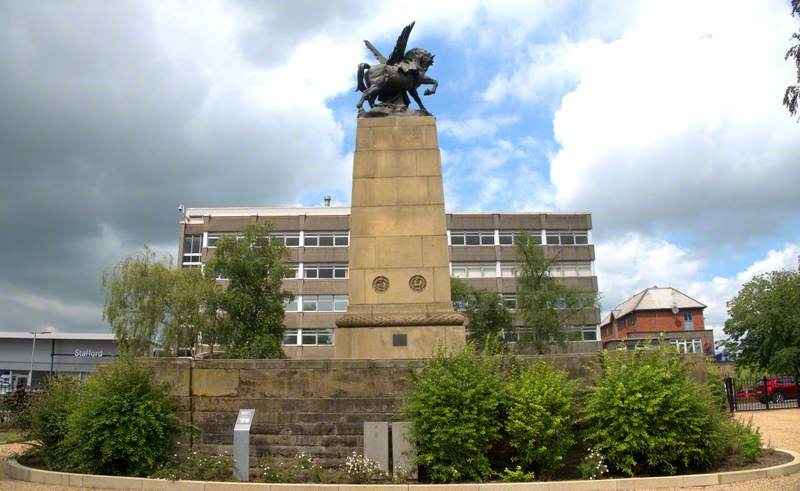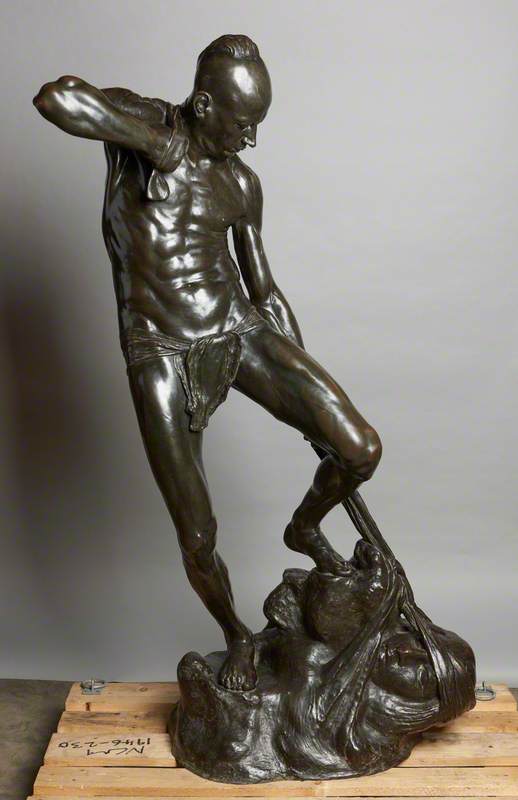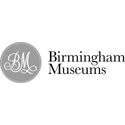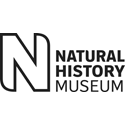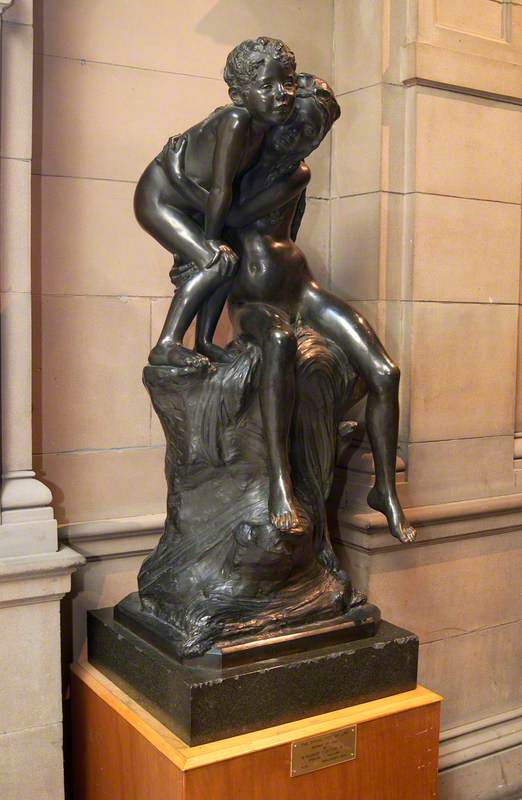
William Robert Colton [also known as William R. Colton] was born in Paris, France on 25 December 1867. As a child he moved to England and subsequently studied at Lambeth School of Art and under Henry Hugh Armstead (1828-1905) and Joseph Edgar Boehm, (1834-1890) at the Royal Academy Schools in London. He exhibited frequently at the Royal Academy in London between 1889 and [posthumously] 1922. He also exhibited at the New Gallery, and Royal Institute of Painters in Water Colours in London; Royal Birmingham Society of Artists; Walker Art Gallery in Liverpool; Manchester City Art Gallery; Aberdeen Artists' Society; Royal Glasgow Institute of the Fine Arts; the Royal Scottish Academy in Edinburgh; Royal West of England Academy in Bristol; and at the Paris Salon.
He was elected an Associate of the Royal Academy (ARA) in 1903; a Royal Academician (RA) in 1919; and a member of the Royal Society of British Sculptors (RSBS) in 1905. He was also elected a member of the Art Workers Guild in 1894, and from 1897 to 1900 was a member of the Arts & Crafts Exhibition Society. In 1920-21 he was President of the Royal Society of British Sculptors. Two works by him, "The Girdle" (1898) and "The Springtime of Life" (1903) were purchased by the Chantrey Bequest. He taught at the Royal Academy Schools from 1907 to 1912.
Notable among Colton's public commissions were the Drinking Fountain in Hyde Park, London (1896); the Royal Artillery Monument (Boer War Memorial), St. James’s Park, London (1909); and the Worcester Boer War Memorial (1909); and the Staffordshire County War Memorial (completed posthumously, 1923).
He died at St Mary Abbot's Place, Kensington, London on 13 November 1921.
Text source: Arts + Architecture Profiles from Art History Research net (AHRnet) https://www.arthistoryresearch.net/
